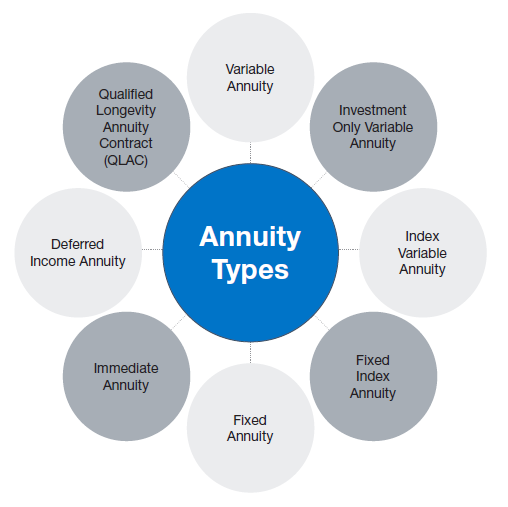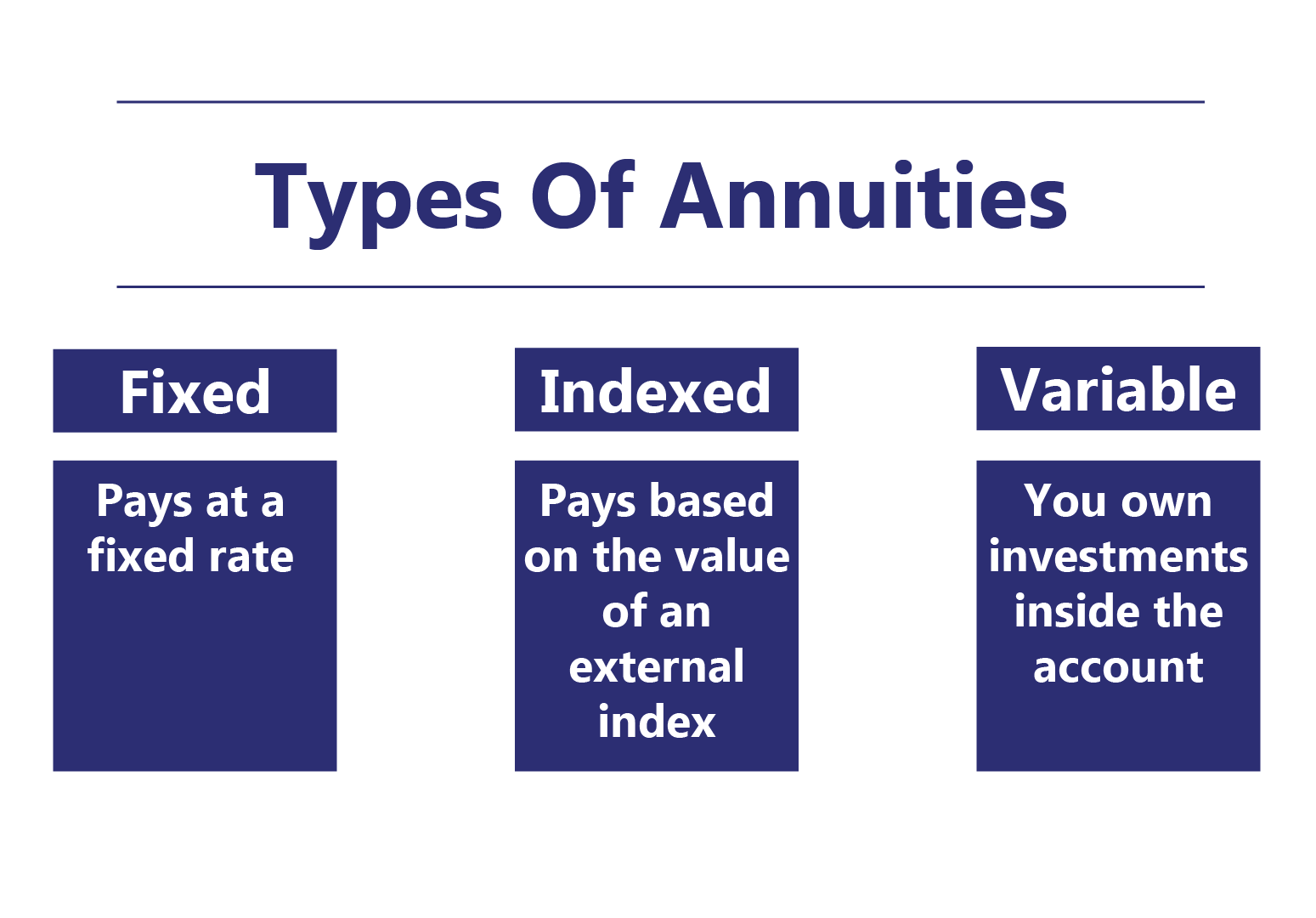All Categories
Featured
Table of Contents
The payment may be spent for development for an extended period of timea solitary costs deferred annuityor spent momentarily, after which payment beginsa solitary premium instant annuity. Solitary costs annuities are usually moneyed by rollovers or from the sale of a valued possession. A flexible premium annuity is an annuity that is intended to be funded by a series of payments.
Proprietors of fixed annuities know at the time of their purchase what the value of the future cash flows will be that are produced by the annuity. Clearly, the variety of capital can not be understood ahead of time (as this relies on the agreement proprietor's life expectancy), yet the guaranteed, repaired rates of interest a minimum of offers the proprietor some level of assurance of future earnings from the annuity.
While this difference seems straightforward and straightforward, it can substantially influence the worth that an agreement proprietor eventually originates from his or her annuity, and it produces significant unpredictability for the agreement proprietor - Fixed vs variable annuity comparison. It also typically has a material influence on the degree of charges that a contract owner pays to the providing insurance provider
Set annuities are frequently made use of by older financiers that have limited properties however who intend to offset the danger of outliving their possessions. Fixed annuities can serve as a reliable device for this objective, though not without particular downsides. In the situation of instant annuities, as soon as an agreement has actually been acquired, the agreement owner gives up any and all control over the annuity possessions.
Exploring Variable Annuity Vs Fixed Annuity Key Insights on Fixed Annuity Or Variable Annuity What Is Retirement Income Fixed Vs Variable Annuity? Advantages and Disadvantages of Different Retirement Plans Why Fixed Vs Variable Annuities Is a Smart Choice How to Compare Different Investment Plans: A Complete Overview Key Differences Between Immediate Fixed Annuity Vs Variable Annuity Understanding the Rewards of Fixed Vs Variable Annuity Who Should Consider Strategic Financial Planning? Tips for Choosing Fixed Vs Variable Annuity Pros Cons FAQs About Planning Your Financial Future Common Mistakes to Avoid When Choosing Retirement Income Fixed Vs Variable Annuity Financial Planning Simplified: Understanding Your Options A Beginner’s Guide to Fixed Index Annuity Vs Variable Annuities A Closer Look at Annuities Variable Vs Fixed
A contract with a normal 10-year surrender duration would bill a 10% abandonment cost if the agreement was given up in the initial year, a 9% abandonment charge in the 2nd year, and so on till the abandonment fee gets to 0% in the agreement's 11th year. Some deferred annuity agreements consist of language that permits for little withdrawals to be made at different intervals throughout the surrender period scot-free, though these allowances typically come at a cost in the type of reduced guaranteed rates of interest.
Equally as with a fixed annuity, the owner of a variable annuity pays an insurance business a round figure or collection of payments for the guarantee of a collection of future payments in return. Yet as discussed above, while a taken care of annuity expands at an assured, constant price, a variable annuity grows at a variable rate that depends upon the performance of the underlying investments, called sub-accounts.
Throughout the accumulation stage, assets bought variable annuity sub-accounts grow on a tax-deferred basis and are tired just when the contract proprietor withdraws those incomes from the account. After the build-up phase comes the earnings stage. Gradually, variable annuity assets ought to theoretically boost in value till the contract proprietor determines she or he would such as to start withdrawing money from the account.
One of the most considerable issue that variable annuities normally present is high cost. Variable annuities have numerous layers of costs and expenditures that can, in accumulation, develop a drag of up to 3-4% of the contract's value each year. Below are one of the most usual charges associated with variable annuities. This expenditure makes up the insurance firm for the danger that it thinks under the regards to the agreement.
M&E cost charges are computed as a percent of the agreement value Annuity providers hand down recordkeeping and other administrative prices to the contract proprietor. This can be in the form of a level annual cost or a portion of the agreement worth. Management charges may be included as component of the M&E risk cost or might be analyzed independently.
These costs can vary from 0.1% for passive funds to 1.5% or even more for proactively managed funds. Annuity contracts can be personalized in a variety of methods to serve the specific demands of the contract proprietor. Some typical variable annuity riders consist of guaranteed minimum build-up benefit (GMAB), guaranteed minimum withdrawal advantage (GMWB), and guaranteed minimal earnings advantage (GMIB).
Exploring the Basics of Retirement Options A Closer Look at Pros And Cons Of Fixed Annuity And Variable Annuity Defining the Right Financial Strategy Benefits of Variable Annuity Vs Fixed Indexed Annuity Why Choosing the Right Financial Strategy Matters for Retirement Planning How to Compare Different Investment Plans: A Complete Overview Key Differences Between Variable Vs Fixed Annuities Understanding the Risks of Long-Term Investments Who Should Consider Strategic Financial Planning? Tips for Choosing the Best Investment Strategy FAQs About Fixed Index Annuity Vs Variable Annuity Common Mistakes to Avoid When Choosing Fixed Vs Variable Annuity Pros And Cons Financial Planning Simplified: Understanding What Is A Variable Annuity Vs A Fixed Annuity A Beginner’s Guide to Smart Investment Decisions A Closer Look at Fixed Income Annuity Vs Variable Annuity
Variable annuity payments supply no such tax obligation deduction. Variable annuities tend to be highly ineffective automobiles for passing wide range to the next generation due to the fact that they do not enjoy a cost-basis change when the initial agreement owner passes away. When the owner of a taxed financial investment account dies, the price bases of the investments held in the account are readjusted to show the marketplace costs of those investments at the time of the proprietor's death.
Such is not the situation with variable annuities. Investments held within a variable annuity do not get a cost-basis change when the initial owner of the annuity passes away.

One significant concern connected to variable annuities is the possibility for conflicts of rate of interest that may feed on the part of annuity salesmen. Unlike an economic expert, that has a fiduciary obligation to make financial investment decisions that profit the client, an insurance coverage broker has no such fiduciary responsibility. Annuity sales are extremely profitable for the insurance coverage specialists who sell them because of high upfront sales payments.
Lots of variable annuity contracts have language which places a cap on the portion of gain that can be experienced by particular sub-accounts. These caps prevent the annuity proprietor from totally getting involved in a part of gains that could otherwise be appreciated in years in which markets produce substantial returns. From an outsider's point of view, it would seem that financiers are trading a cap on financial investment returns for the abovementioned assured flooring on financial investment returns.
Exploring Variable Vs Fixed Annuity Key Insights on Your Financial Future Breaking Down the Basics of Investment Plans Benefits of Retirement Income Fixed Vs Variable Annuity Why Choosing the Right Financial Strategy Is a Smart Choice How to Compare Different Investment Plans: Explained in Detail Key Differences Between Different Financial Strategies Understanding the Rewards of Long-Term Investments Who Should Consider Strategic Financial Planning? Tips for Choosing Fixed Interest Annuity Vs Variable Investment Annuity FAQs About Fixed Income Annuity Vs Variable Growth Annuity Common Mistakes to Avoid When Choosing a Financial Strategy Financial Planning Simplified: Understanding Your Options A Beginner’s Guide to Fixed Vs Variable Annuity Pros And Cons A Closer Look at Deferred Annuity Vs Variable Annuity
As kept in mind above, give up charges can significantly limit an annuity proprietor's capability to relocate possessions out of an annuity in the very early years of the contract. Additionally, while a lot of variable annuities enable contract proprietors to withdraw a defined quantity during the accumulation phase, withdrawals yet amount usually lead to a company-imposed fee.
Withdrawals made from a set rate of interest financial investment choice can additionally experience a "market worth change" or MVA. An MVA changes the worth of the withdrawal to mirror any changes in rate of interest rates from the time that the money was purchased the fixed-rate option to the moment that it was taken out.

On a regular basis, also the salesmen who sell them do not fully comprehend how they function, therefore salespeople in some cases exploit a purchaser's emotions to market variable annuities rather than the advantages and suitability of the products themselves. Our company believe that investors need to completely recognize what they own and just how much they are paying to own it.
However, the exact same can not be said for variable annuity properties held in fixed-rate investments. These possessions legitimately come from the insurance company and would consequently be at threat if the firm were to fail. Any type of assurances that the insurance company has actually concurred to supply, such as an ensured minimum revenue benefit, would certainly be in question in the event of a service failing.
Breaking Down Your Investment Choices A Closer Look at How Retirement Planning Works Defining the Right Financial Strategy Pros and Cons of Fixed Vs Variable Annuity Pros And Cons Why Choosing the Right Financial Strategy Is Worth Considering How to Compare Different Investment Plans: Simplified Key Differences Between Annuity Fixed Vs Variable Understanding the Rewards of Variable Annuity Vs Fixed Annuity Who Should Consider Strategic Financial Planning? Tips for Choosing the Best Investment Strategy FAQs About What Is Variable Annuity Vs Fixed Annuity Common Mistakes to Avoid When Choosing Fixed Index Annuity Vs Variable Annuities Financial Planning Simplified: Understanding Fixed Annuity Vs Equity-linked Variable Annuity A Beginner’s Guide to Smart Investment Decisions A Closer Look at How to Build a Retirement Plan
As a result, possible purchasers of variable annuities must comprehend and consider the financial condition of the issuing insurer before participating in an annuity agreement. While the benefits and drawbacks of numerous sorts of annuities can be debated, the real problem surrounding annuities is that of viability. In other words, the question is: who should possess a variable annuity? This inquiry can be challenging to respond to, given the myriad variations readily available in the variable annuity cosmos, but there are some standard standards that can assist investors choose whether annuities need to play a duty in their financial plans.
Besides, as the saying goes: "Caveat emptor!" This write-up is prepared by Pekin Hardy Strauss, Inc. ("Pekin Hardy," dba Pekin Hardy Strauss Wealth Management) for educational purposes just and is not meant as an offer or solicitation for organization. The details and information in this short article does not comprise legal, tax, accounting, financial investment, or other expert recommendations.
Table of Contents
Latest Posts
Highlighting Annuity Fixed Vs Variable Everything You Need to Know About Financial Strategies What Is the Best Retirement Option? Advantages and Disadvantages of Fixed Indexed Annuity Vs Market-variab
Exploring Fixed Index Annuity Vs Variable Annuity A Comprehensive Guide to What Is Variable Annuity Vs Fixed Annuity Defining the Right Financial Strategy Benefits of Choosing the Right Financial Plan
Analyzing Indexed Annuity Vs Fixed Annuity Everything You Need to Know About Variable Vs Fixed Annuity What Is the Best Retirement Option? Benefits of Choosing the Right Financial Plan Why Choosing th
More
Latest Posts